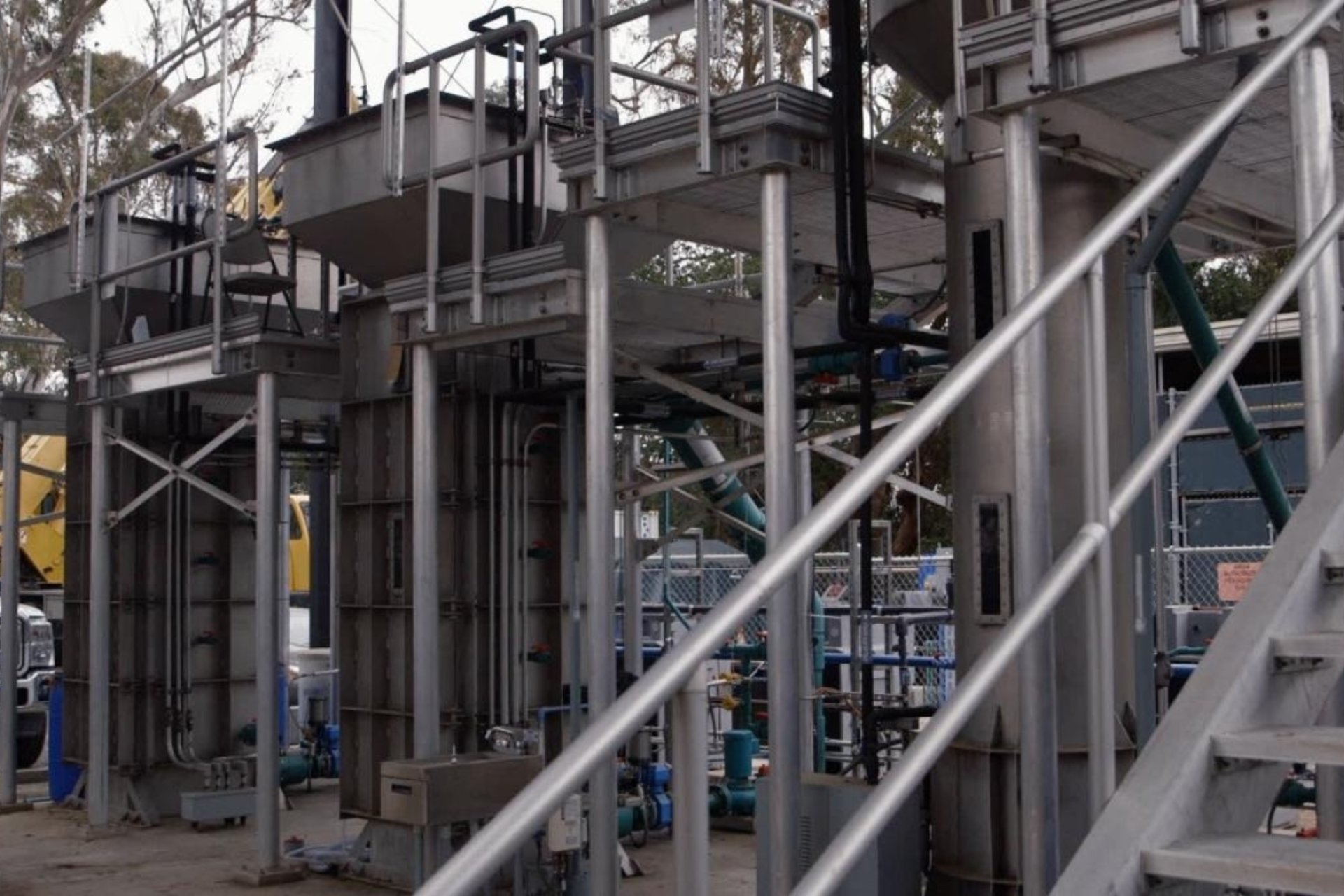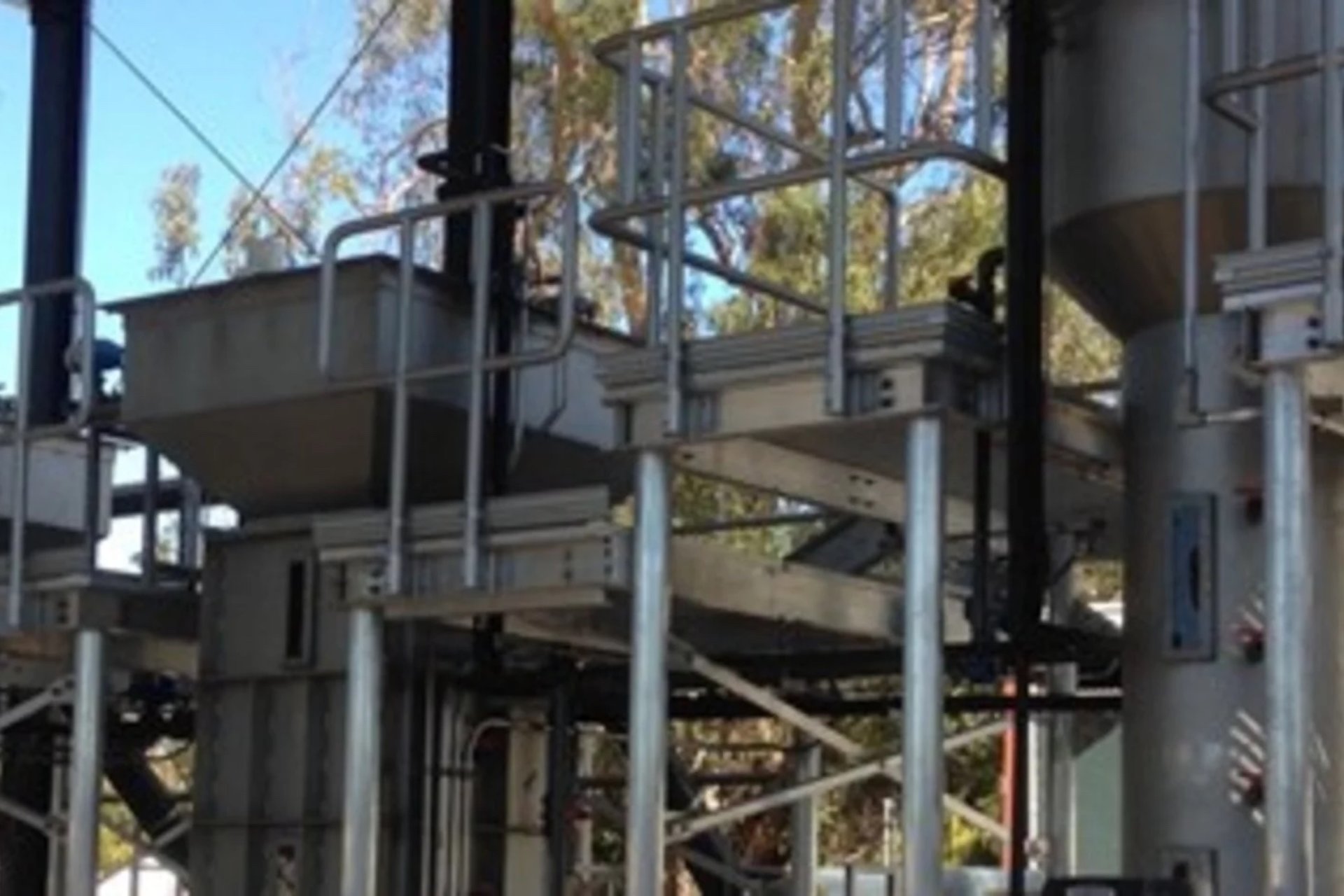High-rate microbial production of nitrous oxide for energy generation
Funding Year: 2009
Research Areas: Freshwater, Sustainability
Regions: North America
This project joins the fields of space propulsion and environmental biotechnology to develop a bioreactor that converts waste nitrogen into nitrous oxide that is subsequently decomposed into nitrogen and oxygen for thermal power generation. The goal is to develop a low-cost technique that removes nitrogen from water and produces oxygen as a byproduct instead of nitrous oxide, a potent greenhouse gas.
July 27, 2010
By Daniel Strain and Mark Shwartz
Within the sludge of wastewater treatment plants is an invisible world teeming with microbes. Here, diverse species of bacteria convert solid and liquid wastes into gases, some of which contribute to global warming.
Now two Stanford University engineers are developing a new sewage treatment process that would actually increase the production of two greenhouse gases - nitrous oxide (aka, "laughing gas") and methane - and use the gases to power the treatment plant.
"Normally, we want to discourage these gases from forming," said Craig Criddle, a professor of civil and environmental engineering and senior fellow at the Woods Institute for the Environment at Stanford. "But by encouraging the formation of nitrous oxide, we can remove harmful nitrogen from the water and simultaneously increase methane production for use as fuel."
Criddle, an expert in wastewater management, has joined forces with Brian Cantwell, a professor of aeronautics and astronautics, who has spent the last five years designing rocket thrusters that run on nitrous oxide.
With support from a Woods Institute Environmental Venture Projects grant, Cantwell and Criddle are applying that rocket technology to sewage treatment, with the goal of making the process energy neutral and emissions free.
"We want to reduce the cost of wastewater treatment, increase energy generation and eliminate greenhouse gas emissions," Cantwell said.
"For too long we've thought of treatment plants as places where we remove organic matter and waste nitrogen," Criddle added. "We need to view these wastes as resources, not simply something to dispose of."
Microbial zoo
For Criddle and Cantwell, the first step in building a green treatment plant is raising the right kind of bacteria. "We're really managing a zoo," Criddle said. "To get the right microbes, we need to encourage the growth of bacteria that produce nitrous oxide gas."
One way to accomplish that is by reducing the bacteria's oxygen supply, he said. Conventional treatment plants pump air into wastewater sludge - a process called aeration. The idea is to convert nitrogen waste into harmless nitrogen gas by promoting oxygen-loving bacteria that thrive on sugars and other organic matter in the sludge.
But aeration is a costly and energy-intensive process. As an alternative, the Stanford team wants to create a low-oxygen environment in the treatment plant, where nitrous oxide-producing bacteria are favored, while aerobic species die off.
These nitrous oxide producers consume relatively small amounts of organic matter. That's good news for other anaerobic microbes that produce methane gas by feasting on organic compounds. "When bacteria make nitrous oxide, less organic matter is oxidized, so more can be converted into methane - potentially two or three times more than is possible in a typical treatment plant," Criddle said. "That extra methane can be used as fuel to run the plant independent of outside power sources."
Using less oxygen also could reduce costs, Cantwell added. "In a typical treatment plant, aeration is responsible for about half of the operating expenses," he said. "So pumping less oxygen could save a lot of money."
Rocket science
In recent experiments, the researchers demonstrated that under laboratory conditions nitrous oxide gas could be produced from wastewater using a low-oxygen technique. But there's a downside to the process. Nitrous oxide is a significant greenhouse gas that's more than 300 times more potent than carbon dioxide.
That's where Cantwell's rocket thruster comes in. Designed for use in spacecraft, the thruster runs on nitrous oxide - a surprisingly clean-burning propellant.
"When it decomposes, nitrous oxide breaks down into pure nitrogen and oxygen gas," Cantwell explained. "At the same time, it releases enough energy to heat an engine to almost 3,000 degrees Fahrenheit, making it red hot, and it shoots out of the engine at almost 5,000 feet per second, producing enough thrust to propel a rocket."
In 2008, Yaniv Scherson, one of Cantwell's graduate students, was looking for a suitable topic for a doctoral thesis that would incorporate the thruster research.
"We wondered whether nitrous oxide could be exploited as an emissions-free source of energy," Cantwell said. "Since the product of the decomposition reaction is simply oxygen-enriched air, energy is generated with zero production of greenhouse gas. But first we needed to find a cheap, plentiful source of nitrous oxide."
Scherson eventually turned to Criddle, who had spent years studying microbial communities in wastewater treatment plants. Criddle explained that wastewater sludge contains bacteria that naturally convert nitrogen wastes into nitrous oxide, providing Scherson a cheap source of the gas.
Soon, Scherson, Criddle and Cantwell joined forces in a unique experiment bridging two very different fields - space propulsion and environmental biotechnology. "It took a couple of rocket scientists to make this happen," Criddle said.
The result was a novel design with the potential for treating the world's wastewater: First, reduce oxygen levels at the treatment plant to encourage the production of nitrous oxide and methane gas. Then use the extra methane to power the plant and a small rocket thruster to break down the nitrous oxide into clean, hot air. "A single thruster about the size of a basketball could potentially consume every ounce of nitrous oxide produced by a typical treatment plant," Cantwell said.
New generation
Most treatment plants in the United States are using technology developed in the 1970s and are in dire need of an overhaul, according to Criddle. "In the U.S., we haven't invested much in wastewater treatment in recent decades," he said.
Cantwell envisions a new generation of plants that are energy self-sufficient. "You even have the prospect of installing a wastewater facility where there is no energy source," he said. "This could be especially important in the Third World, where millions of people live with contaminated water."
Both researchers say that the technology could have other applications beyond wastewater treatment. For example, they also want to explore ways to recover energy from nitrate-contaminated groundwater beneath fertilized agricultural fields. "We're thinking very broadly about all the ways nitrogen gets into the environment, and how we can exploit it," Cantwell said.
"If successful, this technology could be a game changer, with the potential for worldwide impact on several fronts," Criddle said.
Restoring the Earth's nitrogen cycle
The world's supply of nitrogen exists in a never-ending loop, moving from the atmosphere to nitrogen-fixing bacteria to plants and animals, then back to bacteria and, eventually, to the air.
But humans have broken this natural cycle, according to Criddle. "We now take more nitrogen from the air, mostly through the manufacture of agricultural fertilizers, than we give back," he said.
Tons of excess nitrogen fertilizer also flow into groundwater, rivers and eventually out to sea, where it feeds massive algal blooms that can damage marine ecosystems. Nitrogen also impacts human health. Too much nitrate in drinking water can be extremely harmful to infants and pregnant women, according to the Centers for Disease Control.
"Slowly but surely the world is being contaminated with waste nitrogen," Cantwell added. "Restoring the balance is a critical thing to do for the future of the planet."
Farmers lose money when nitrogen is wasted, Criddle added. "But with the right technology, the balance of the nitrogen cycle can be restored and value recovered from waste nitrogen," he said.
And Criddle looks forward to a world where nitrogen once again runs in a sustainable loop - and at a profit.
Daniel Strain is a science-writing intern at the Woods Institute for the Environment at Stanford University. Mark Shwartz is the Woods Institute communications manager.
Learn more about the Environmental Venture Projects grant program and other funded projects.
Principal Investigators:
Brian Cantwell, Edward C. Wells Professor in the School of Engineering and Professor of Mechanical Engineering
Craig Criddle, Professor of Civil and Environmental Engineering and Senior Fellow at the Woods Institute for the Environment
Related News
A Stanford scholar's recovery process advances to pilot project with sanitation district.
Mentions Woods Senior Fellow Craig Criddle and Stanford's plan to build a resource recovery center





